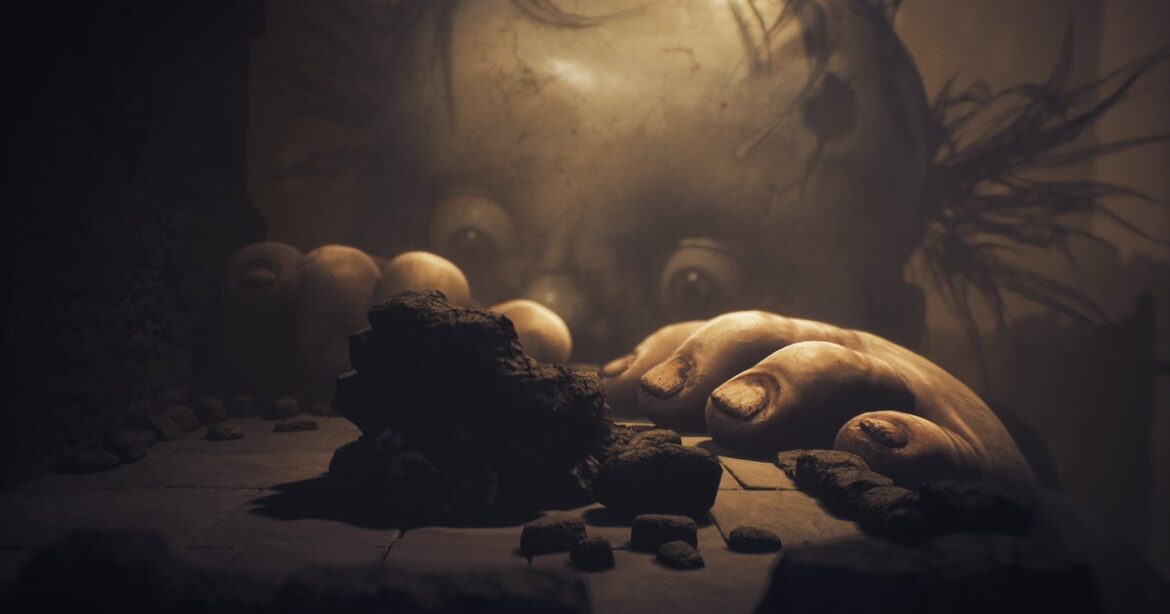Little Nightmares 3 review
Little Nightmares 3 is a heartbreakingly competent cover act of the series previous entries. It’s got a few truly brilliant moments, but a comparative dearth of imagination.
- Developer: Supermassive Games
- Publisher: Bandai Namco
- Release: Out now
- On: Windows
- From: Steam
- Price: £35/€40/$40
- Reviewed on: Intel Core i5-12600K, 32GB RAM, Nvidia RTX 4060 Ti, Windows 11
The code Bandai Namco were kind enough to send me for puzzle platformer Little Nightmares 3 included a swathe of bonus costumes resembling characters and monsters from the previous games. Another way to phrase this would be that, before I’d had a chance to get to know this game’s duo of very brave, very doomed children, the game offered me a way to paint over their identities with something I recognised from a time I enjoyed myself in the past.
Hmmmmm, thought I. Then I thought it again. But longer.
Little Nightmares 3 is the first game in its series not made by its creators, Tarsier studios. You’re telling me a tarsier made two of mine (and RPS’s) favourite horror games? Best news I’ve had since the shrimps, thank you. This time, duties fall on Supermassive, of spending a decade forgetting why Until Dawn was good fame. I’ve enjoyed many of Supermassive’s games, but the handover concerned me. Little Nightmares traditionally had a bit more life in its DNA than might well be captured through a series of replicable signifiers related to genre, perspective, and those little elves with conical hats. How would they do?
Watch on YouTube
Reader, they did fine. Little Nightmares 3 is – in a word preceding a second word that makes the second word do things it was not originally intended to do – heartbreakingly competent. Picture the sort of time you roughly assume you might have with a Little Nightmares game not as good as the other two, and you’re most of the way there. To be blunt, I think the game largely displays a real dearth of imagination, intentionality, and most crucially, heart. It does, however, have some neat ideas, an oddly good final encounter, some beautifully creepy environmental art, and at least one moment of pure terror. It’s little as in diminutive, like diminished, as in shrunk, as in less than. But also as in, you know, good job little buddies. You did fine.
Whoaaaa. What if food, but like, too much? | Image credit: Rock Paper Shotgun/Supermassive
That last line was obviously a joke about how patronising I am. I felt it necessary to point this out because, even as I’m about to grouse limerickal about a certain predictability and dryness that hangs over this thing like a frayed rope holding the twelfth pushable crate in the last fifteen minutes, I would like to spend a moment gushing about a kind of storyboarding genius that easily fades into invisibility. The game is about six hours long, and a stunning amount of forethought is needed to keep even an experience of that length progressing at a good, tense clip, with all its crests and lulls and aesthetic and tonal switch ups. It is not the tracks of this ghost train I mourn as much as the bolts keeping them together, so when I whine about ‘intentionality’, I’d just like to make clear that I do not believe something like this can be made without serious intention.
Still, when you make the first set-piece threat in the game a giant creepy infant doll, and later follow this up with a series of disconnected locales, including Spoopy Fairground and Spoopy Asylum, with more scary puppets and scary dolls, I must admit, I start weary and get wearier. The first two Little Nightmares embody a lasting, lingering sadness that elevated them above an easy Burtonesque, Hot Topic creepy-cute. So much of the threat feels either abstract or plain or recycled here. And, when the grotesque becomes commonplace, the grotesquerie starts to resemble a Halloween themed Mario level, dangerous plants and all.
Image credit: Rock Paper Shotgun/Supermassive
Unfortunately, this kind of predictability also extends to a lot of the puzzle design and navigation. I was about halfway through when I realised that I kept having the same experience, over and over. I’d walk into a room full of fascinating and strange objects and marvel at what elaborate scene I’d have to concoct, only to get stuck because I’d been overlooking that the solution was usually just to climb up a thing and push a door to the next bit.
What is somewhat interesting is that both kids have different tools here: a big wrench for Alone and a bow for Low. The AI companion is exceptionally competent at doing what they need to in a given scene, to the point where they basically solve around a third of the puzzles for you. If you’re playing solo, then, you’ve got two playthroughs with distinct demands on your timing and co-ordination during certain scenes, and it might be worth swapping characters with a mate after you’ve finished, too.
Image credit: Rock Paper Shotgun/Supermassive
Scores are obviously anathema to what we do at RPS, although I’m not so strong a person that I can avoid pointing out that if someone were to show me a picture of original series protagonist Six right now, I’d nod sagely and say “indeed”. Again, there’s a couple of really inspired scenes and more than a couple of arresting sights here, good enough to drag me from ‘meh’ to ‘oh damn!’ a few times. It plays like what it is, really: a cover act. A tribute. A flatpack knock-off of a trendy piece. Good quality. Well built. You could hit it with a wrench and it’d barely shake. Then again, I do have to ask whether it’s a good thing that I find myself assessing a game like a piece of furniture.

